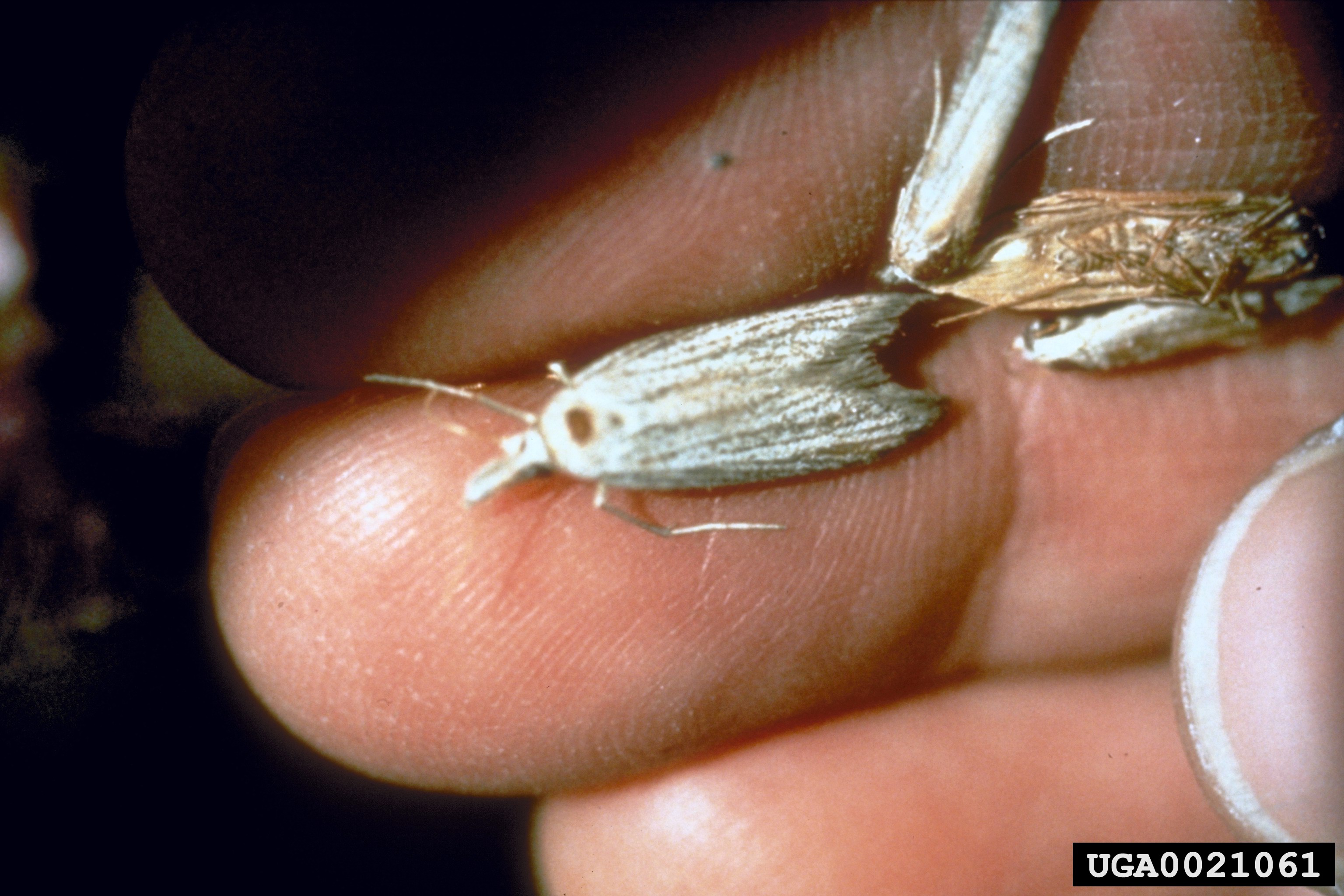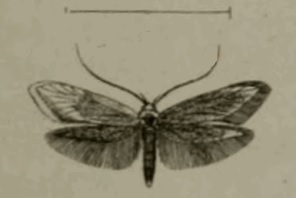|
Syringopais
''Syringopais'' is a moth genus. It is here placed in family Pterolonchidae, but its relationships are obscure and some authors instead ally it with the Gelechiidae, Autostichinae and/or Symmocidae and place it elsewhere in the Gelechioidea __NOTOC__ Gelechioidea (from the type genus ''Gelechia'', "keeping to the ground") is the superfamily of moths that contains the case-bearers, twirler moths, and relatives, also simply called curved-horn moths or gelechioid moths. It is a large a .... Species *'' Syringopais temperatella'' (Lederer, 1855) References Syringopainae Moth genera {{Gelechioidea-stub ... [...More Info...] [...Related Items...] OR: [Wikipedia] [Google] [Baidu] |
Syringopais Temperatella
''Syringopais temperatella'', the cereal leaf miner or wheat leaf miner, is a very small sized moth of the family Pterolonchidae. It is found on Cyprus and in Greece and the Near East. It is an important pest in cereal grain fields in some areas. Taxonomy It was first described in 1855 by Julius Lederer as ''Oecophora temperatella'', from two males collected by Franz Zach in Beirut in Lebanon. These are the syntypes. The first female was collected in Palestine as a single specimen and described as a different species, ''O. fuscofasciata'', by Henry Tibbats Stainton in his ''Tineina of Syria and Asia Minor'' of 1867. Stainton also mentions examining and coming across specimens of ''O. temperatella'' from Palestine, and that he was "strongly disposed to think that this is the female of ''O. temperatella''". A rather damaged female specimen collected in "Smyrna" ( Izmir), Turkey, was described as the synonym ''Butalis ochrolitella'' by Otto Staudinger in 1871. Staudinger also menti ... [...More Info...] [...Related Items...] OR: [Wikipedia] [Google] [Baidu] |
Pterolonchidae
Pterolonchidae is a small family of very small moths in the superfamily Gelechioidea.Wikispecies (2008-NOV-06) There are species native to every continent except Australia and Antarctica. Taxonomy and systematics As of 2014 the family may be considered to consist of the following seven genera: *'' Anathyrsa'' Meyrick, 1920 - 1 species *''Coelopoeta'' Walsingham, 1907 - 3 species *'' Houdinia'' Hoare, Dugdale & Watts, 2006 - 1 species *''Homaledra'' Busck, 1900 - 4 species *'' Plexippica'' Meyrick, 1912 - 2 species *''Pterolonche'' Zeller, 1847 - 7 species *''Syringopais'' Hering, 1919 - 1 species The family Pterolonchidae was first named by Edward Meyrick in 1918. Meyrick omitted a description, thus the family was a ''nomen nudum'', until Thomas Bainbrigge Fletcher provided the first description of the family in 1929. In 1987 (the journal volume is dated to 1986, but this issue was published the following year) Antonio Vives Moreno published a revision of the family. Viv ... [...More Info...] [...Related Items...] OR: [Wikipedia] [Google] [Baidu] |
Syringopainae
Pterolonchidae is a small family of very small moths in the superfamily Gelechioidea.Wikispecies (2008-NOV-06) There are species native to every continent except Australia and Antarctica. Taxonomy and systematics As of 2014 the family may be considered to consist of the following seven genera: *'' Anathyrsa'' Meyrick, 1920 - 1 species *''Coelopoeta'' Walsingham, 1907 - 3 species *'' Houdinia'' Hoare, Dugdale & Watts, 2006 - 1 species *''Homaledra'' Busck, 1900 - 4 species *'' Plexippica'' Meyrick, 1912 - 2 species *''Pterolonche'' Zeller, 1847 - 7 species *''Syringopais'' Hering, 1919 - 1 species The family Pterolonchidae was first named by Edward Meyrick in 1918. Meyrick omitted a description, thus the family was a ''nomen nudum'', until Thomas Bainbrigge Fletcher provided the first description of the family in 1929. In 1987 (the journal volume is dated to 1986, but this issue was published the following year) Antonio Vives Moreno published a revision of the family. Vives i ... [...More Info...] [...Related Items...] OR: [Wikipedia] [Google] [Baidu] |
Autostichinae
__NOTOC__ The Autostichinae are a subfamily of moths in the superfamily Gelechioidea. Like their relatives therein, their exact relationships are not yet very well resolved. The present lineage was often included in the concealer moth family (Oecophoridae), but alternatively it is united with the Symmocidae '' sensu stricto'' (and often also the Holcopogonidae and/or certain genera otherwise considered twirler moths, e.g. '' Deoclona'' and '' Syringopais'') to form an expanded family Autostichidae (in the past also referred to as family Symmocidae). Selected genera Genera in this subfamily are:ABRS (2008), Wikispecies (2011-OCT-17) * '' Anaptilora'' Meyrick, 1904 * '' Autosticha'' Meyrick, 1886 (including ''Epicoenia, Semnolocha'') * '' Demiophila'' Meyrick, 1906 * '' Deroxena'' Meyrick, 1913 * '' Diophila'' Meyrick, 1937 * '' Encrasima'' Meyrick, 1916 * '' Galagete'' B.Landry, 2002 * '' Heliangara'' Meyrick, 1906 * '' Ischnodoris'' Meyrick, 1911 * '' Lasiodictis'' Meyrick, ... [...More Info...] [...Related Items...] OR: [Wikipedia] [Google] [Baidu] |
Moth
Moths are a paraphyletic group of insects that includes all members of the order Lepidoptera that are not butterflies, with moths making up the vast majority of the order. There are thought to be approximately 160,000 species of moth, many of which have yet to be described. Most species of moth are nocturnal, but there are also crepuscular and diurnal species. Differences between butterflies and moths While the butterflies form a monophyletic group, the moths, comprising the rest of the Lepidoptera, do not. Many attempts have been made to group the superfamilies of the Lepidoptera into natural groups, most of which fail because one of the two groups is not monophyletic: Microlepidoptera and Macrolepidoptera, Heterocera and Rhopalocera, Jugatae and Frenatae, Monotrysia and Ditrysia.Scoble, MJ 1995. The Lepidoptera: Form, function and diversity. Oxford, UK: Oxford University Press; 404 p. Although the rules for distinguishing moths from butterflies are not well establishe ... [...More Info...] [...Related Items...] OR: [Wikipedia] [Google] [Baidu] |
Genus
Genus ( plural genera ) is a taxonomic rank used in the biological classification of extant taxon, living and fossil organisms as well as Virus classification#ICTV classification, viruses. In the hierarchy of biological classification, genus comes above species and below family (taxonomy), family. In binomial nomenclature, the genus name forms the first part of the binomial species name for each species within the genus. :E.g. ''Panthera leo'' (lion) and ''Panthera onca'' (jaguar) are two species within the genus ''Panthera''. ''Panthera'' is a genus within the family Felidae. The composition of a genus is determined by taxonomy (biology), taxonomists. The standards for genus classification are not strictly codified, so different authorities often produce different classifications for genera. There are some general practices used, however, including the idea that a newly defined genus should fulfill these three criteria to be descriptively useful: # monophyly – all descendants ... [...More Info...] [...Related Items...] OR: [Wikipedia] [Google] [Baidu] |
Family (biology)
Family ( la, familia, plural ') is one of the eight major hierarchical taxonomic ranks in Linnaean taxonomy. It is classified between order and genus. A family may be divided into subfamilies, which are intermediate ranks between the ranks of family and genus. The official family names are Latin in origin; however, popular names are often used: for example, walnut trees and hickory trees belong to the family Juglandaceae, but that family is commonly referred to as the "walnut family". What belongs to a family—or if a described family should be recognized at all—are proposed and determined by practicing taxonomists. There are no hard rules for describing or recognizing a family, but in plants, they can be characterized on the basis of both vegetative and reproductive features of plant species. Taxonomists often take different positions about descriptions, and there may be no broad consensus across the scientific community for some time. The publishing of new data and opini ... [...More Info...] [...Related Items...] OR: [Wikipedia] [Google] [Baidu] |
Gelechiidae
The Gelechiidae are a family of moths commonly referred to as twirler moths or gelechiid moths. They are the namesake family of the huge and little-studied superfamily Gelechioidea, and the family's taxonomy has been subject to considerable dispute. These are generally very small moths with narrow, fringed wings. The larvae of most species feed internally on various parts of their host plants, sometimes causing galls. Douglas-fir (''Pseudotsuga'') is a host plant common to many species of the family, particularly of the genus ''Chionodes'', which as a result is more diverse in North America than usual for Gelechioidea. By the late 20th century, over 900 genera with altogether more than 4,500 species were placed here, with about 650 genera known from North America alone. While these figures are certainly outdated, due to the many revisions to superfamily Gelechioidea and new descriptions of twirler moths, they still serve to show the enormous biodiversity contained in this import ... [...More Info...] [...Related Items...] OR: [Wikipedia] [Google] [Baidu] |
Symmocidae
The Symmocinae are a subfamily of moths in the superfamily Gelechioidea. These small moths are found mainly in the Palearctic and Africa. In modern treatments, they are usually united with the concealer moth family Autostichidae. History of classification They have traditionally been considered close relatives of the Blastobasidae, where they were sometimes included as subfamily ''Symmocinae''. In arrangements that include the former in the case-bearer family (Coleophoridae) as subfamily Blastobasinae, the Symmocidae were usually treated as tribe ''Symmocini''. Alternatively, they have been united with the Holcopogonidae; in such a treatment the combined group is typically not included in the concealer moth family (Oecophoridae) but treated as distinct family Autostichidae or Symmocidae, with the respective subfamilies downranked to tribes. Another group proposed to be a close relative is the Xyloryctinae, usually included in the Oecophoridae wherever the Symmocidae are. More re ... [...More Info...] [...Related Items...] OR: [Wikipedia] [Google] [Baidu] |
Gelechioidea
__NOTOC__ Gelechioidea (from the type genus ''Gelechia'', "keeping to the ground") is the superfamily of moths that contains the case-bearers, twirler moths, and relatives, also simply called curved-horn moths or gelechioid moths. It is a large and poorly understood '"micromoth" superfamily, constituting one of the basal lineages of the Ditrysia.Robinson ''et al.'' (1994), Hodges (1999), O'Toole (2002) As of the 1990s, this superfamily was composed of about 1,425 genera and 16,250 species. It was estimated that only 25% of the species diversity of Gelechioidea had been described. If this estimate is accurate, Gelechioidea will be one of the largest superfamilies of Lepidoptera. The name "curved-horn moths" refers to one of the few conspicuous features found in (almost) all Gelechioidea, and, at least in the more extreme developments, unique to them: the labial palps are well-developed (though not thickened), and form more or less gently curved protrusions whose end has a draw ... [...More Info...] [...Related Items...] OR: [Wikipedia] [Google] [Baidu] |




